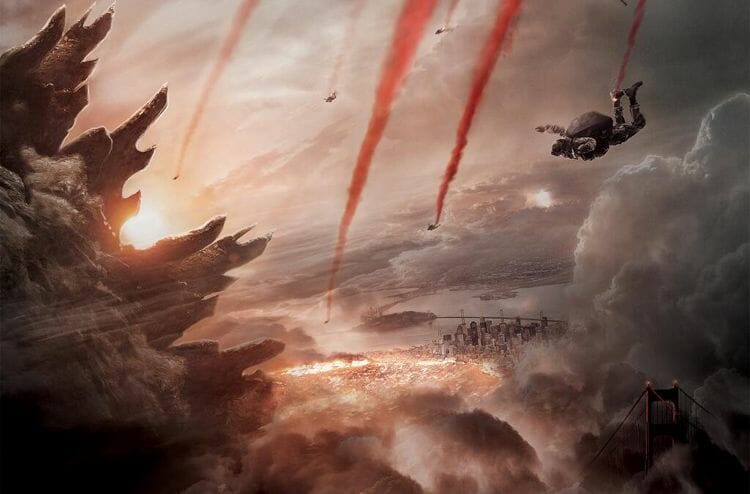By Michelle Donnelly · May 19, 2014


Minus the subplot, which makes a statement about nuclear weapons and wayward technology, Godzilla movies have not, nor have they ever been known for their intricate storytelling or their winning of cinematic accolades. They are campy and formulaic and that’s what has been so perfect about them. 2014’s Godzilla pays homage to the originals and hits its mark as the likely beginning of more sequels.
It’s 1999, and Joe Brody (Bryan Cranston) is an engineer at the Janjira nuclear power plant in Japan where he lives with his wife (Juliette Binoche) and son (Aaron Taylor-Johnson). Brody has been worried about seismic activity in the area and sends his wife, who also works in the plant, to the core to investigate. Meanwhile in the Philippines, scientists Ichiro Serizawa (Ken Watanabe) and Vivienne Graham (Sally Hawkins) arrive to discover a massive skeleton and a hatched spore. Almost simultaneously, the Janjira plant experiences a massive explosion that kills many of its workers. The Japanese government claims natural disaster and fearing radiation leaks, quarantines the area after its evacuation. Fast-forward fifteen years later and we find Joe on a destructive journey to find the truth behind what he believes is a governmental cover-up. His obsession has come close to destroying his relationship with his son, Ford, who is now an Explosive Ordnance Disposal technician for the Navy. The seismic activity has started once again and the pair is at the center of it.
Over the span of twenty-eight films, Japanese production company Toho has created a beloved creature. In fact, Godzilla is one of the few fictional characters to have his own star on the Hollywood Walk of Fame and it seems we all have those people in our lives who are uber fans; they contemplate the size of his tail, wax poetic about the shape and color of his scales and debate about his latest opponent. That attention to detail by a core fan base is what has kept the franchise alive for sixty years. Director Gareth Edwards understands this, and gives the audience the Godzilla of yesteryear. He took to heart the criticisms heaped on 1998’s Godzilla from Roland Emmerich and Dean Devlin, and came out better for it. Whereas, Emmerich and Dean expected the audience to excuse their subpar script in exchange for flashy technology and epic scenes of destruction, Edwards embraces the more traditional formula to his advantage. He gives the audience a simple story, likeable characters and lively action sequences complimented by superior special effects. Maybe most important, is his treatment of Godzilla’s appearance. Condemnation was fierce over Emmerich refashioning Godzilla into a sleeker looking predator. One might call this current version the passive, slightly overweight, but loveable cousin of the 1998 Godzilla, who totally kicks ass when it’s reveal nearly deafens us (in the best of ways of course). In all the right ways, Edward’s Godzilla is superior.
For all that is right with this film, though, there are also downsides. Simply put, more Godzilla and more Bryan Cranston would have made the film better. Understanding that it is a calculated ploy to keep Godzilla from the audience in order to build suspense, one must presume the audience isn’t seeing this film to see Godzilla foes, the M.U.T.O. (Massive Unidentified Terrestrial Organisms) have their way with an innocent populace. They serve their purpose, but we see way too much of them over the course of the film and not enough Godzilla. As far as Bryan Cranston goes, well, he just makes everything better.
Godzilla provides us an uncomplicated story about love and family and, for fun, rewards us with a big monster fighting other big monsters. It seems to be paying off. From a public practically reeling with PTSD after their ill-fated 1998 encounter with Godzilla, to the reported $93 million domestic box office opening this weekend, it’s safe to say Godzilla is back in a big way.